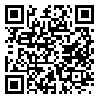Volume 28 - Supplementary
IBJ 2024, 28 - Supplementary: 208-208 |
Back to browse issues page
Download citation:
BibTeX | RIS | EndNote | Medlars | ProCite | Reference Manager | RefWorks
Send citation to:



BibTeX | RIS | EndNote | Medlars | ProCite | Reference Manager | RefWorks
Send citation to:
Fathifar Z, Sadri S, Darabi F, Ferdousi R. Mobile Health Applications for Mental Health: Review and Analysis of Functionality/Technical Features and Content. IBJ 2024; 28 :208-208
URL: http://ibj.pasteur.ac.ir/article-1-4631-en.html
URL: http://ibj.pasteur.ac.ir/article-1-4631-en.html
Abstract:
ntroduction: Mobile devices and applications (apps) serve as essential tools for healthcare management significantly enhancing mental health outcomes. However, the vast number of mobile health apps available in commercial app stores makes it challenging for users and healthcare professionals to select the most suitable options for their needs. The content and features of these apps have yet to be systematically reviewed and compared. This study aimed to evaluate the content and features of mental health apps for self-care. We reviewed the existing apps and provided recommendations for future development based on principles of understanding and self-management.
Methods and Materials: Four online stores, The iOS Apple App Store, Android Google Play Store, Bazar (the Persian version of Google Play), and Myket (a Persian App Store), were searched in December 2023 using related keywords. Two independent reviewers utilized a multi-step review process to identify eligible applications. The inclusion criteria for the application were Persian or English language mental health apps with a 3.5-star rating compatible with Android or iOS. The exclusion criteria were any application downloaded less than 2k times and those that had access or technical problems. We extracted information from installing the apps, app store descriptions, and users' comments for each eligible application. Then, we categorized it into the following characteristics: features, specialty, user interface, downloaded times, cost, and user rating. User reviews were compiled from a subsample of applications. In addition, we conducted Google searches to obtain more information about the apps.
Results: A total of 389 apps were identified as eligible. The eligible apps were downloaded for review, and 61 apps (51 English language apps and 10 Persian languages) met the criteria and were included in the quality assessment. Almost all provided acceptable privacy, authentication, and confidentiality; about 90% of applications require a user account. Persian language apps did not have acceptable features and were at a preliminary level. Most apps (58.8%) could be used online/offline, and 14 applications must be used online. "In-App-Payment" was much more prevalent (74.5 % of apps). Only 15 apps had a free version with limited functionality. Also, 19.6% of applications utilized artificial intelligence, and 19 apps offered teleconsulting with a team of therapists. In 41.1% of applications, chatrooms were available for communication.
Conclusion and Discussion: This review identifies limitations in features, design quality, and content of existing mental health mobile apps. Patients and professionals should choose the app based on the topics of most or particular interest. App developers should engage caregivers and patients as target users and involve government agencies as partners to improve Mental health apps. Future apps should incorporate scientifically proven advanced functions to enhance their effectiveness.

Methods and Materials: Four online stores, The iOS Apple App Store, Android Google Play Store, Bazar (the Persian version of Google Play), and Myket (a Persian App Store), were searched in December 2023 using related keywords. Two independent reviewers utilized a multi-step review process to identify eligible applications. The inclusion criteria for the application were Persian or English language mental health apps with a 3.5-star rating compatible with Android or iOS. The exclusion criteria were any application downloaded less than 2k times and those that had access or technical problems. We extracted information from installing the apps, app store descriptions, and users' comments for each eligible application. Then, we categorized it into the following characteristics: features, specialty, user interface, downloaded times, cost, and user rating. User reviews were compiled from a subsample of applications. In addition, we conducted Google searches to obtain more information about the apps.
Results: A total of 389 apps were identified as eligible. The eligible apps were downloaded for review, and 61 apps (51 English language apps and 10 Persian languages) met the criteria and were included in the quality assessment. Almost all provided acceptable privacy, authentication, and confidentiality; about 90% of applications require a user account. Persian language apps did not have acceptable features and were at a preliminary level. Most apps (58.8%) could be used online/offline, and 14 applications must be used online. "In-App-Payment" was much more prevalent (74.5 % of apps). Only 15 apps had a free version with limited functionality. Also, 19.6% of applications utilized artificial intelligence, and 19 apps offered teleconsulting with a team of therapists. In 41.1% of applications, chatrooms were available for communication.
Conclusion and Discussion: This review identifies limitations in features, design quality, and content of existing mental health mobile apps. Patients and professionals should choose the app based on the topics of most or particular interest. App developers should engage caregivers and patients as target users and involve government agencies as partners to improve Mental health apps. Future apps should incorporate scientifically proven advanced functions to enhance their effectiveness.

| Rights and permissions | |
 |
This work is licensed under a Creative Commons Attribution-NonCommercial 4.0 International License. |







.png)
